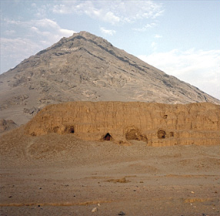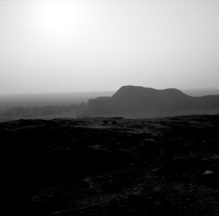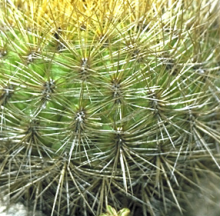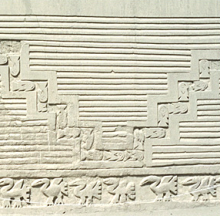explore
Coastal Desert - Terrain

The coastal region of the Central Andes is made up of dry flat plains and sand dunes, and at slightly higher elevations, the dry Andean foothills, which have been carved by erosion. These narrow coastal lowlands rarely experience precipitation, but are intersected by some fifty rivers that bring rainwater down from the Andes in the east. Many of these rivers dry up for part of the year and yet in these river valleys developed some of the greatest Andean civilizations, their populations supported by extensive irrigation agriculture.
Image: Located within the Moche Valley, the battered Huaca de la Luna - a massive pyramid built by the Moche people from millions of mud bricks - remains as defiant and desolate, as the natural terrain which surrounds it.

The aridity of the coast is caused by the existence of the cold Humboldt current that comes up the coast from Antarctica. The current cools the southwesterly winds that blow along the coast. As the cool air travels across the coastal plain, it heats up, increasing its ability to retain moisture, resulting in a lack of rainfall. When it reaches the western slopes of the Andes it cools again, the moisture forming clouds. During the winter (June to October), clouds are trapped beneath a layer of warm air, which causes a fog and mist that envelopes the coast (garua). As a result, the desert plain is dry and cool while the air is humid.
Image: Ancient pyramids in the Moche Valley loom within a thick coastal fog.

This desert plain consists of sand dunes that are almost barren of even the hardiest desert-type shrubs. Vegetation that does occur consists of sparse bush and shrub, and in some areas, clumps of mesquites. On the lower western slopes of the mountains, large spectacular cacti are common. Tillandsia, a bromelia that obtains moisture from the air (not the soil) grows in some areas. Where irrigation exists in the alluvial valleys, agricultural crops thrive. The rivers run high only from December to March, which is the summer rainy season in the highlands. Only the larger rivers with headwaters high in the Andes retain water all year round.

Within this narrow geographical niche, ancient peoples exploited both sea and land resources, developing irrigation agriculture in the river valleys. By A.D. 1200, irrigation canals had transformed parts of the desert into fertile oases that supported large populations. At the ancient city of Chan Chan (A.D. 900-1470), lush sunken gardens planted with maize and lined with fruit trees lay along the shorelines.

Image: A decorative frieze containing fish and sea bird motifs adorns one of the many walled compounds of the massive ancient city of Chan Chan. The parched landscape flourished with life in ancient times due to the industry of groups like the Chimú and their predecessors. The bounty of the sea was harvested and the desert was made to bear produce thanks to extensive canal systems which brought fresh mountain water from nearby rivers into the scorched desert terrain.